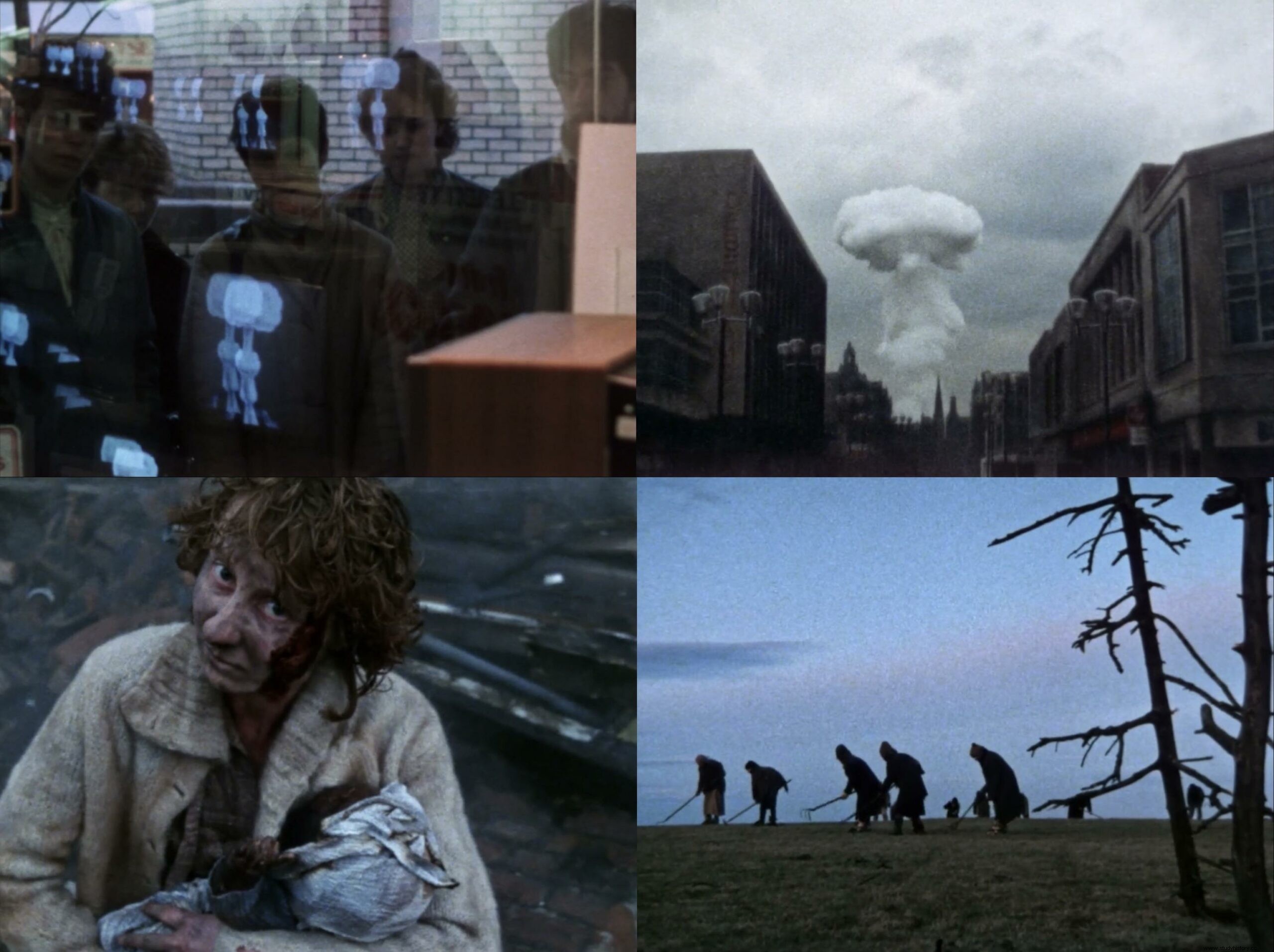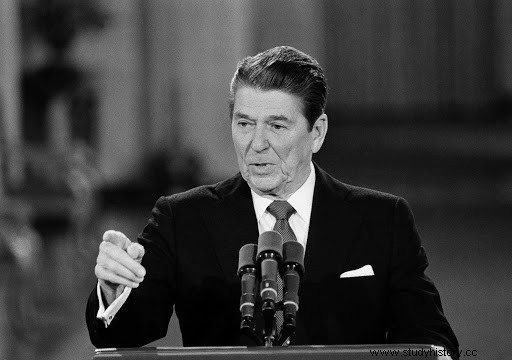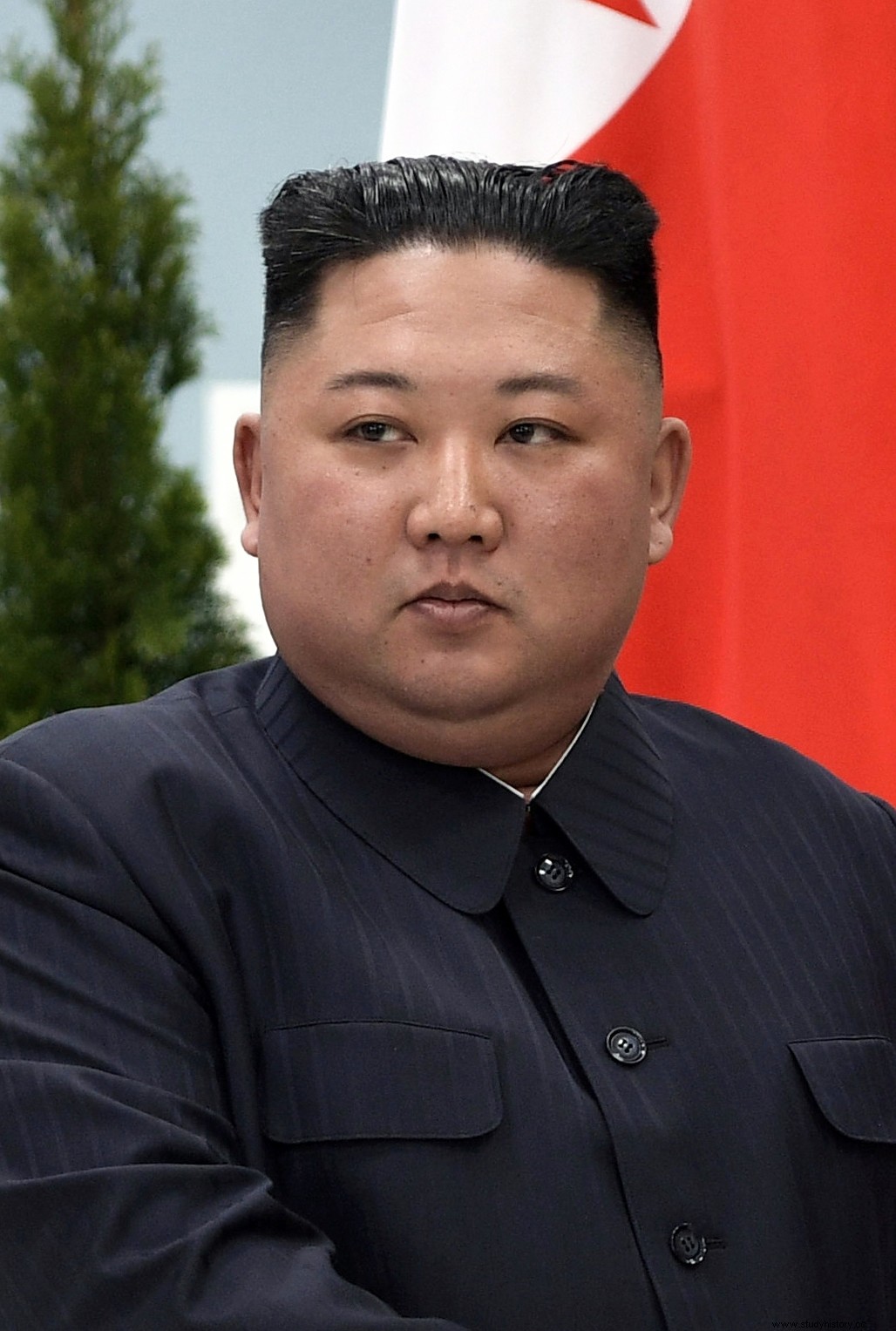
Threads is a British horror film first broadcast on the BBC in 1984. The film, directed by Mick Jackson, describes the effects of a nuclear attack on Britain during a nuclear war. Threads is known for its horrific depiction of a nuclear war. The film also realistically depicts the aftermath of a nuclear explosion:radiation poisoning, birth defects, nuclear winter, fallout and widespread disease and starvation. Watching Threads can leave the viewer stunned and speechless. The film also makes you appreciate the fact that nuclear war has not happened. It makes you cherish life.
Despite being published over 30 years ago, Tråder holds up surprisingly today. Its honest depiction of death and destruction in nuclear war can be applied to any time period, past or present. This article will demonstrate how Threads is still relevant to our current global village. But first, let's take a look at the film and the historical context behind it.
Brief synopsis
The film centers around a young couple from Sheffield, Ruth and Jimmy. The two plan to marry after Ruth unexpectedly becomes pregnant. While all this is happening, hostilities between the United States and the Soviet Union are escalating. As the tension between the two sides grows, the people of Britain become more and more nervous. Demonstrations were held condemning nuclear war. Panic buying has become rampant. The police arrest peace activists, who are considered "Subversives". Finally, a brief nuclear skirmish occurs between the United States and the Soviet Union. This triggers a global nuclear conflict.
Sheffield is targeted for its industry and proximity to NATO and RAF bases. The nuclear warhead exploding over the city wipes out homes, buildings and factories. Similar attacks across Britain instantly kill millions of people. Those who survived the first explosion are hiding in basements and temporary shelters. Many succumb to combustion or radiation.
After the attack
As the months and years progress after the attack, Britain deteriorates into an apocalyptic landscape. A nuclear winter destroys many crops, epidemics are rife, and looting is rampant. When the situation worsens, the authorities and military authorities simply disappear. Decades after the attack, nothing has returned to normal. In fact, things have gotten worse.

Ruth serves as the viewer's guide through the post-apocalyptic land. We see the difficulties in finding food and shelter. We witness the terrible diseases, how unprepared and overrun hospitals become. It is a dystopian setting in every sense of the term.
A terrifying experience
There are many things that make Threads a scary movie. Here are the two most important.
First, the film's visual style adds doom and gloom. The majority of the film has a dark and grainy look without much light or color. In the scenes before the attack, the Sheffield weather is mostly overcast and grey. Once the attack has occurred, the film looks even more dark and gloomy. This visual style heightens the sense of disruption, death and hopelessness that pervades throughout Threads .
Realism
Second, the film's realism makes the events all too real and plausible. The film's opening perfectly captures the rising tensions between the United States and the Soviet Union; this is communicated by news broadcasts and wireless bulletins. The news plays in the background while people go about their lives. Instead of using war scenes to show growing hostilities, Threads uses news media to realistically describe the impending war. In doing so, the film recreates a realistic scenario that everyone can relate to.
The Sheffield nuclear attack may be the most brutal and horrific part of the film. An air raid siren wails as people run for cover. Then the bomb lands and shoots a mushroom cloud high into the air. People scream, while a woman urinates in terror. The sight of the mushroom cloud paired with the sights and the scare sounds (literally the screams) is truly scary. The thermonuclear explosion overturns houses and buildings, killing millions and injuring countless others.
The post-nuclear world is a land of disease and death. Many die from radiation or diseases such as cholera and typhus. The nuclear winter has uprooted the environment. First, it is too cold to plant and harvest a sufficient crop. Later, higher UV ratings increase the risk of cataracts and cancer. Women are forced to sell their bodies for food. The children of this world have little or no education; they speak a bizarre form of English. The government imposes the death penalty to deal with looters and other criminals.

The nuclear attack and its aftermath are treated in a realistic manner. A narrator tells the facts about nuclear attacks and what their results look like. Scenes are interspersed with text that provides additional information, such as potential military targets and casualty figures. This gives the film a documentary feel, which makes Tråder seems more real and terrifying.
Not in control
In the end, the film shows that authority figures are unable to cope with the attack and its consequences. Officials hunker down in a basement command center, but they seem totally unprepared for the level of destruction. They are completely helpless in organizing aid work. This depiction is a truly terrifying thought. Many look to civil servants for help and support; the government will retain control. But when worst comes to worst, these officials are human just like anyone else.
Extensive research
Threads ' realism resulted from research manager Mick Jackson who performed for the project. To achieve an accurate portrayal of nuclear war and fallout, Jackson met with scientists, doctors and defense experts. In addition, findings from the British government in 1980 show that "Square Leg" was used. The project projected what would happen to Britain in the event of a nuclear attack. Jackson used the findings to project the destruction and death toll in the film. The research period lasted several months.
Historical context
Threads was made during the Cold War. The Cold War was a global conflict between the United States and the Soviet Union and their allies. The war lasted from 1947 until 1991 when the Soviet Union fell. Unlike previous wars, the two combatants did not engage directly. Instead, proxy wars were fought:one side uses a group to fight the enemy. The Vietnam War is an example of this. The Cold War extended into space as both sides competed to be the first nation to land humans on the moon.

Throughout the Cold War, the threat of nuclear annihilation was always present. The closest the world ever came to full nuclear conflict was the Cuban Missile Crisis of 1962. During this crisis, leaders from the United States and the Soviet Union engaged in a tense standoff over the installation of Soviet nuclear missiles in Cuba. The missiles were only 90 miles from the US shoreline. President John F. Kennedy enacted a naval blockade of Cuba. He also made it clear that the US was prepared to use military force if necessary to neutralize the threat.
For 13 days the world held its breath. Would it come down to nuclear annihilation? Eventually, both sides reached an agreement. The Soviet Union would dismantle its Cuban site if the US removed the missiles from Turkey. Both sides agreed to the terms, and the globe was spared nuclear warfare.
The Cold War in '84
Cold War tensions eased somewhat during the 1970s. However, it climbed back up in the early 1980s. The United States was under the Ronald Reagan administration. In 1983, President Reagan launched the Strategic Defense Initiative, also called "Star Wars". The program was designed to develop an anti-ballistic missile system to defend against nuclear attack. At the same time, Reagan labeled the Soviet Union as an "evil empire".

At the time of Threads ' release, Soviet troops were in Afghanistan; The Soviet Union invaded Afghanistan in 1979. The invasion marked an end to the improvement in relations between the Soviet Union and the United States that occurred throughout the 1970s. This invasion combined with Reagan's combative stance on communism heated the Cold War to its hottest point since the 1960s. Director Mark Jackson drew inspiration from this global tension for Tråder . The war in the film breaks out first in Iran, which directly parallels the Soviet invasion of Afghanistan. This connection only increased the film's realism; viewers directly related to the film's scenario.
Relevance Today
Threads is somewhat a product of its time. The first half of the film looks and feels like the early 1980s in terms of fashion and culture. The Cold War is long over, and the threat of nuclear annihilation has receded as the dangers of global warming and pandemics are pushed to the fore. But make no mistake, the threat of nuclear holocaust is always present.
Ever Present Danger

Nuclear weapons have not gone the way of the Dodo bird. Even after the Cold War officially ended, several countries continued to test nuclear weapons. France, China and India and Pakistan have all tested nuclear devices; the last test for each nation occurred between 1996 and 1998. The most recent tests come from North Korea. The country conducted nuclear tests in 2006, 2009, 2013 and 2017. North Korea remains the only country in the world that still conducts nuclear tests. All these facts show that nuclear weapons are still present in the post-Cold War era. Their danger remains.
Recent Crisis
The last nuclear crisis unfolded in 2017-2018 between the United States and North Korea. The crisis stems from North Korea's nuclear test in 2017. North Korea's leader Kim Jong-un claimed his country had nuclear missiles capable of reaching the US According to Kim Jong-un "This reality, not a threat". US President Donald Trump was just as tough with his words, both at press conferences and on Twitter. However, the North Korean dictator offered to begin dialogue with South Korea and US President Trump visited North Korea in 2018, becoming the first sitting president to meet the leader.

The two leaders agreed to scale back nuclear weapons. But the details were vague, and further progress soon stalled. Further talks have been conducted since. Nevertheless, North Korea has continued to test nuclear missiles. Reports suggest Kim Jong-un may have dozens of nuclear warheads at his disposal. And they are aimed at South Korea and the United States
Nuclear war?
The recent North Korea crisis has been the closest the world has come to nuclear conflict since the Cold War. The authoritarian state has continued to test nuclear and related weapons, the latest being a ballistic missile test in March 2020. The US and North Korea cannot seem to agree on denuclearization. The US wants a unilateral approach, while Pyongyang favors a step-by-step method. The growing tension between the two countries should be a reminder to the world that nuclear war is possible in the post-Cold War era.
A lasting message

Threads is an honest depiction of nuclear warfare. There is no bravado or gung-ho patriotism. Instead, millions of people are wiped out in the blink of an eye by thermonuclear detonations. The survivors of the explosion soon envy the dead. The post-nuclear world is desolate and destroyed. If the cops or looters don't kill you, it will be from disease, exposure, or radiation fallout.
Director Mick Jackson used his extensive research on the subject to create an accurate depiction of nuclear war. Threads' realism makes it one of the scariest movies in existence.
Despite being a product of the Cold War, Tråder still has relevance today. Nuclear weapons have not disappeared. In fact, many countries still have a large arsenal of nuclear weapons. Nuclear war also remains a threat. The recent North Korea crisis is proof of that.
All these facts stress Threads ' importance. Its candid look at nuclear holocaust is a reminder of the horrors of nuclear conflict; The film should be mandatory for all world leaders. The film also demonstrates how quickly worse comes to worst in the event of a nuclear attack. As the introductory narrative says "the connections that make society strong also make it vulnerable". With the snap of a finger, a nuclear weapon can completely unravel our society. And Threads is proof of that.
